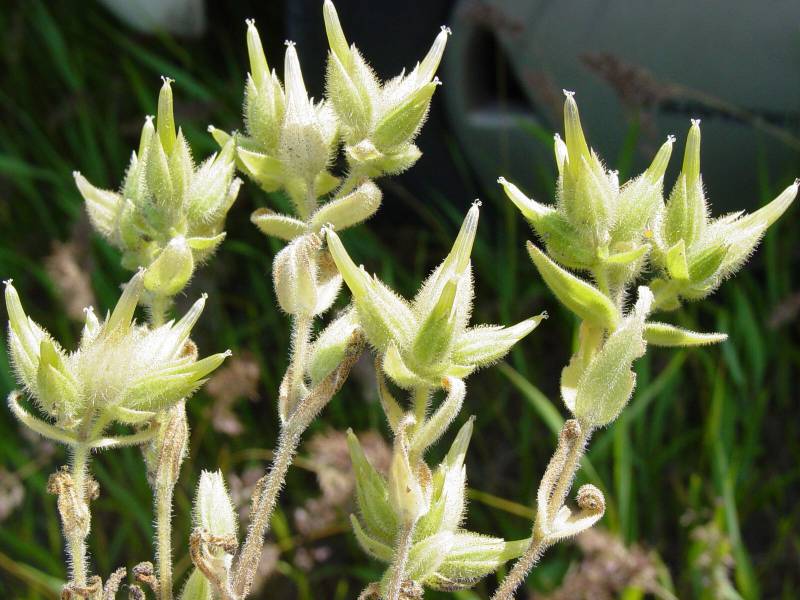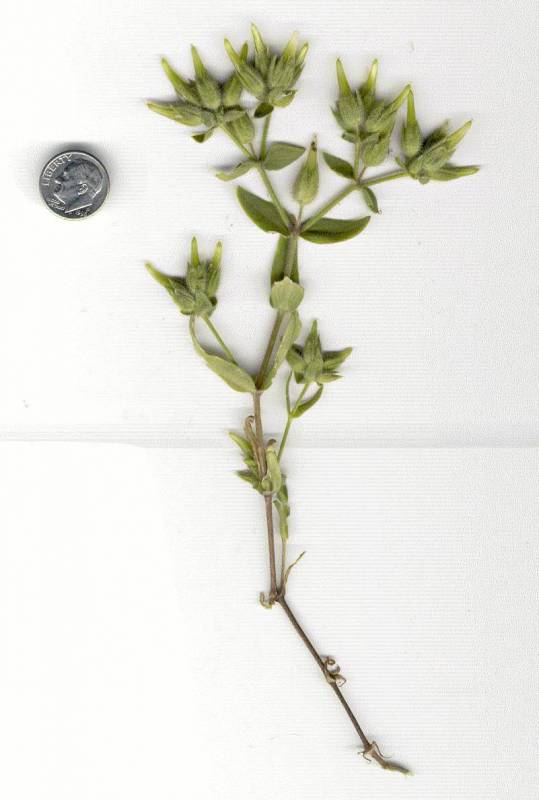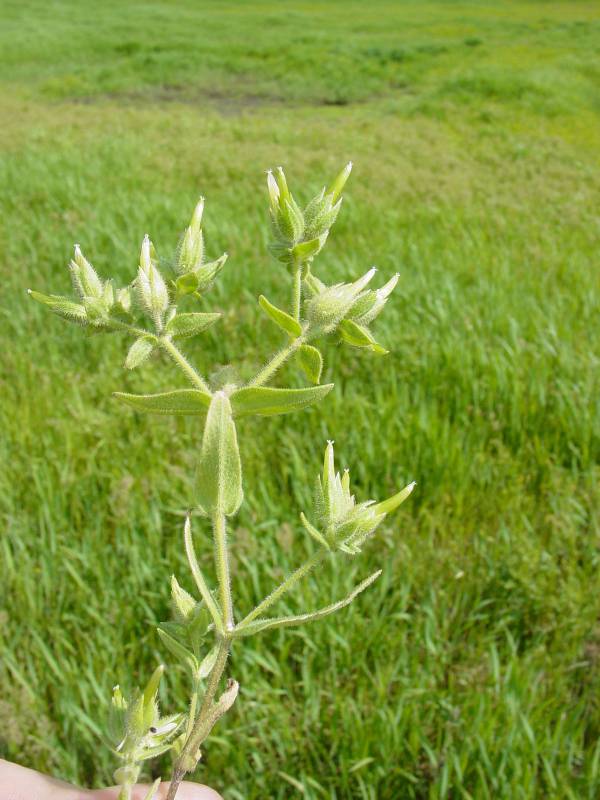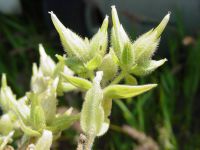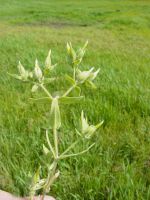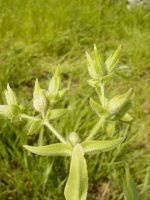Distribution: Occurring in scattered locations east of the Cascades crest in the Columbia River Gorge and in southeastern Washington; Washington to California, east to western Idaho.
Habitat: Disturbed areas, especially along roadsides.
Flowers: April-June
Origin: Introduced from southern Europe
Growth Duration: Annual
Conservation Status: Not of concern
Pollination: Bees, flies, wasps
Glandular annual from a taproot and crown, the stems erect, simple or several from the base, 15-30 cm. tall.
Leaves opposite, simple, broadly linear to lanceolate or oblong, 12-30 mm. long and 3-10 mm. wide, acute, viscid-glandular.
Inflorescences of dense, 3- to 30-flowered cymes, with leaf-like, glandular-pubescent bracts; pedicles erect, 2-10 mm. long; sepals 5, lanceolate, 6-11 mm. long, acute; petals 5, oblanceolate, white, equaling the sepals; stamens 5; styles 5.
Capsules narrowly conic, twice as long as the sepals, straight, with 10 erect teeth.
Publication: Sp. Pl. 1: 438. 1753.
PNW Herbaria: Specimen records of Cerastium dichotomum in the Consortium of Pacific Northwest Herbaria database
WA Flora Checklist: Cerastium dichotomum checklist entry
OregonFlora: Cerastium dichotomum information
E-Flora BC: Cerastium dichotomum atlas page
CalPhotos: Cerastium dichotomum photos

